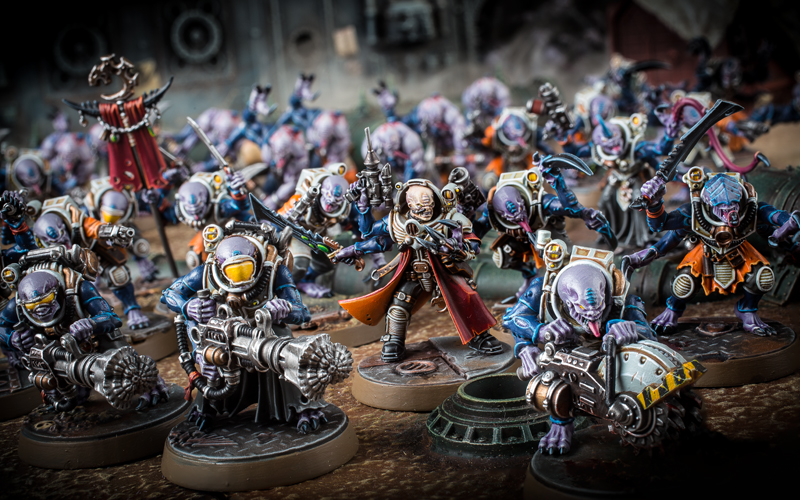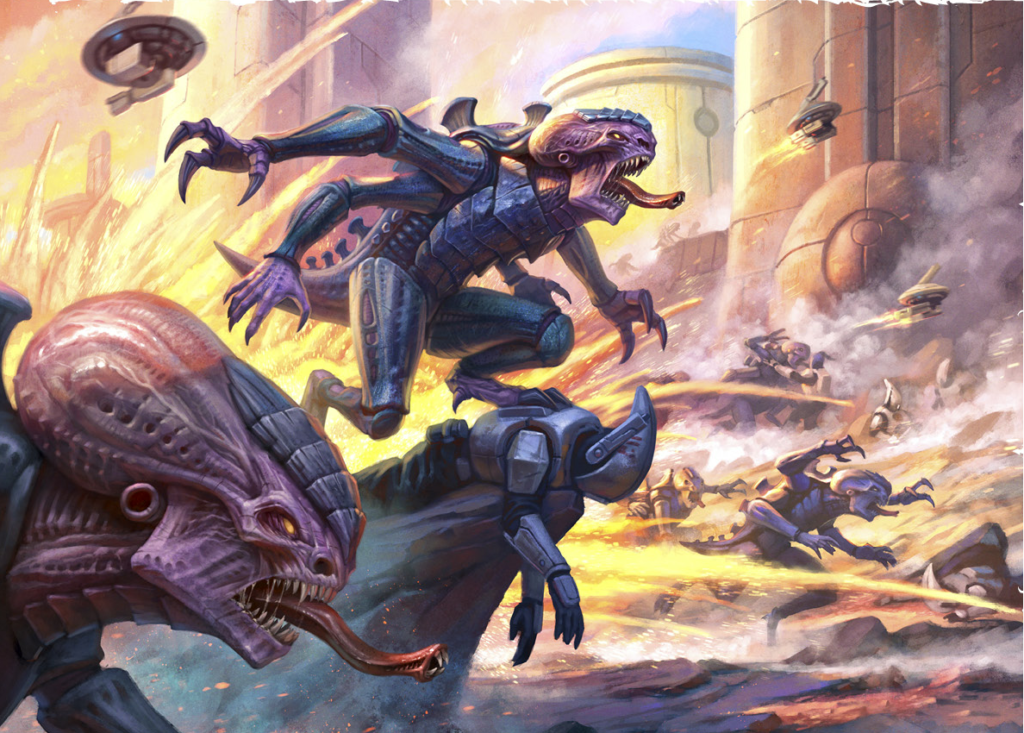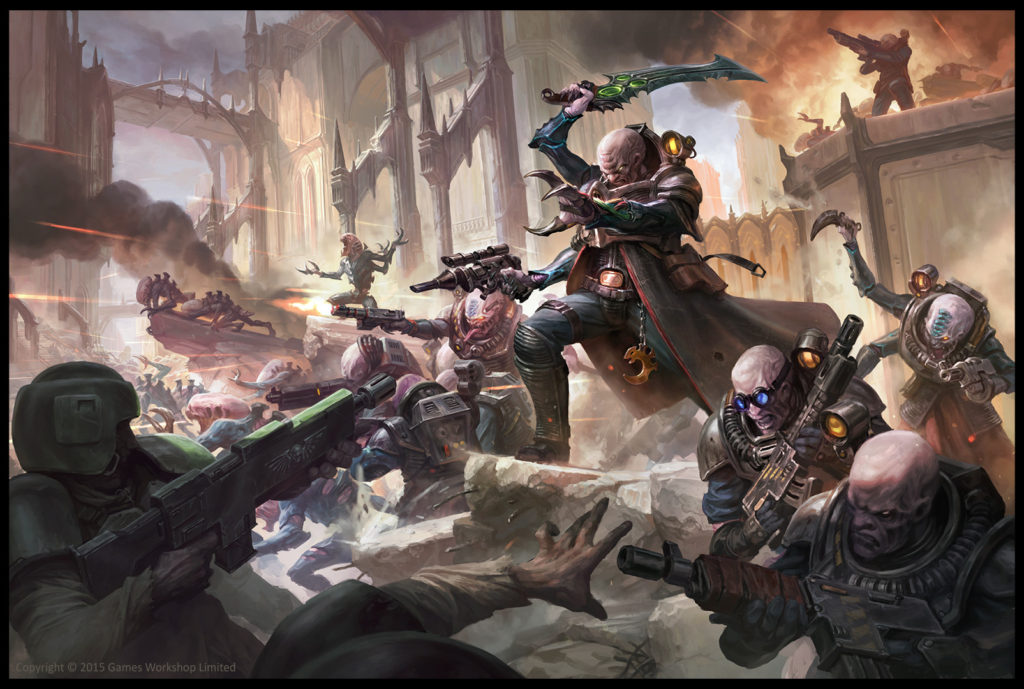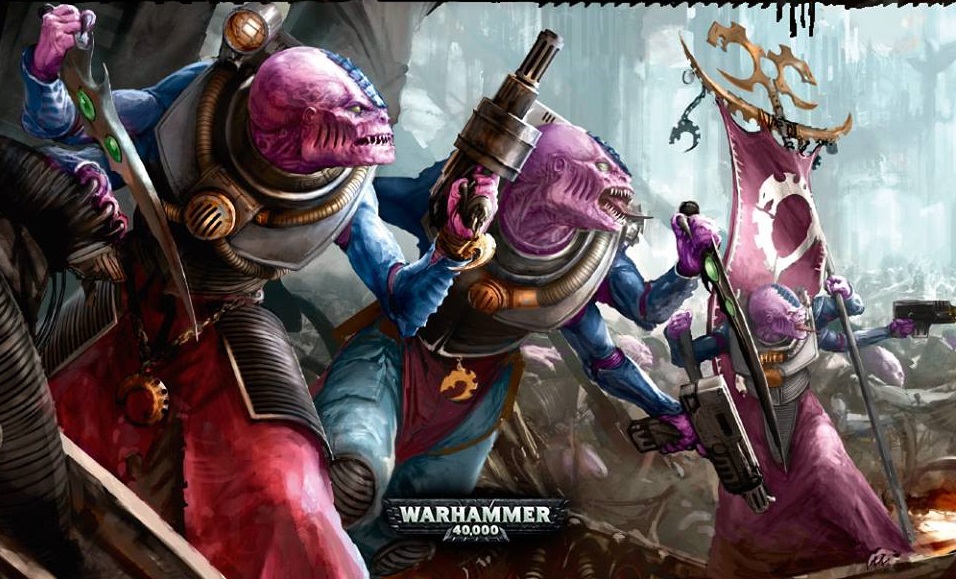Hello All,
As we continue our trek through the narrative crusade rules for all the armies our next release to scrutinize is the mysterious Genestealer Cults. As with the other reviews I have broken the release down into several sections including a final summary at the end.
Army Special Rules
All armies get their own unique mechanic and, unsurprisingly, the Genestealer Cults are focused on overthrowing planets. These rules are a little complex but could provide a lot of depth. You start by generating a world from one of six options (hive world, shrine world, forge world, etc.) As with all GW narrative rules you must accrue points by winning battles or performing nefarious deed to increase your ability to infiltrate the planets societies. Once you have three points you can pick one of the four communities to infiltrate and gain a reward. The rewards are pretty tame as these aren’t your main source of rewards (just small things like little exp rewards and the like). Once all four societies have been infiltrated you can take control of the world (or through winning a battle on the day of ascension, more on that later). The planet rewards are also pretty tame giving some battle upgrades (auto-passing morale, cheaper CP) or campaign rewards such as extra RP or extra Exp. However, as with any secret organization, you can be discovered. You need to roll after each battle, if you roll a 3 or less (after applying all the relevant modifiers) you have been discovered and need to play a special battle. You lose starting CP depending on how many societies you have infiltrated but also auto-pass morale tests. If you win you start the process anew on a new planet, but if you fail then you must suffer an ignominy (similar to the Custodes rules) your choices will either cause you to lose an ascension reward from one of your previously conquered planets or EACH of your Magus, Patriarch and Primus must take a battle scar. Overall these rules are flavorful, but a little complex. I do like that they are encouraging people to play with a narrative focus but there’s in a lot of extra rolling involved.
Battle Traits and Relics
Like other books the battle traits have been divided up into a series of small tables based on the unit’s role (Core, Vehicle or Bikes, etc.). I like the core ones there are some novel choices that are either cover based or give out more Crossfire tokens. The bike and vehicle tables is also quite interesting though I find it hard to imagine how any amount of skilled driving could give a Goliath a 5++ (2 Fast 2 Furious: Mining World Drift). The Purestrain Genestealer/Hybrids/Metamorphs table has two really good options: Always Fights First and, -1 to hit in melee. The Character Table is also really good with one stand out being the ability to pick a unit and give out all aura abilities so long as that unit is visible (regardless of range). It’s good to see the writers starting to think more outside the box with these options. There are really only 1-2 mediocre options in all the tables combined.
Relics:
Both artificer relics are good. One gives you a free warlord trait while the other gives you deepstrike, fly and extra movement (sadly you can’t give it to a patriarch so there goes all those Broodlord-superman cape conversions). The legacy relic is okay, more crossfire tokens are never a bad thing. When it comes to the Legendary Relics I am not fully sold on the Pennant of Ascension. Extra attacks are never bad, especially when paired with the non-range limited battle trait but not really worthy of a legendary slot. The Crown of Ascendancy is a better pick, making one character a super-caster but still doesn’t quite seem worth the extra Crusade Points.
Battlescars:
Where there were many different tables for the Battle Traits, the battle scars are condensed into one table. Eschewing convention the battle scars do not carry any extra benefits like the Necrons, Drukhari, and other Codexes. There are enough options to give you the ability to pick a non-devastating option and even some of the worse ones are very fluffy.
Agendas and Requisitions:
The agendas for the GSC might be some of the most interesting released so far. Every agenda has a second bonus that helps your cult in it’s path to ascension and really allows you to focus on achieving agendas if the battle is out of reach. Seriously, the narrative story options for each of these agendas is great, the only downside is you can only pick one. When it comes to requisitions there are some great options. If you have a leveled-up patriarch you can get your new characters with +6 exp, for more experienced units you can give them an additional Proficient Planning ability (or rent one option for one game). Alternatively, you can give a Proficient Planning ability if you meet a series of stringent requirements, while the others give extra units at a higher level or bolster your crusade roster.
Summary:
All in all I think this book is an interesting juxtaposition with the Custodes codex. Where the Custodes build beefy character units the GSC are fare better at building support units and getting useful abilities. I think the codex does a good job at creating an incentive to play your GSC in a very narrative manner, with a focus on the larger goals compared to the immediate battle. One note that might challenge GMs running a crusade campaign is how to factor in all these planets that they GSC are trying to overrun. On the one hand it can kinda ruin the narrative if you have well crafted worlds vital to the narrative that the GSC can disrupt. On the other hand this may give you an interesting story hook. I am not quite sure the best way to account for this but I will puzzle on it a bit longer.
And remember, Frontline Gaming sells gaming products at a discount, every day in their webcart!







